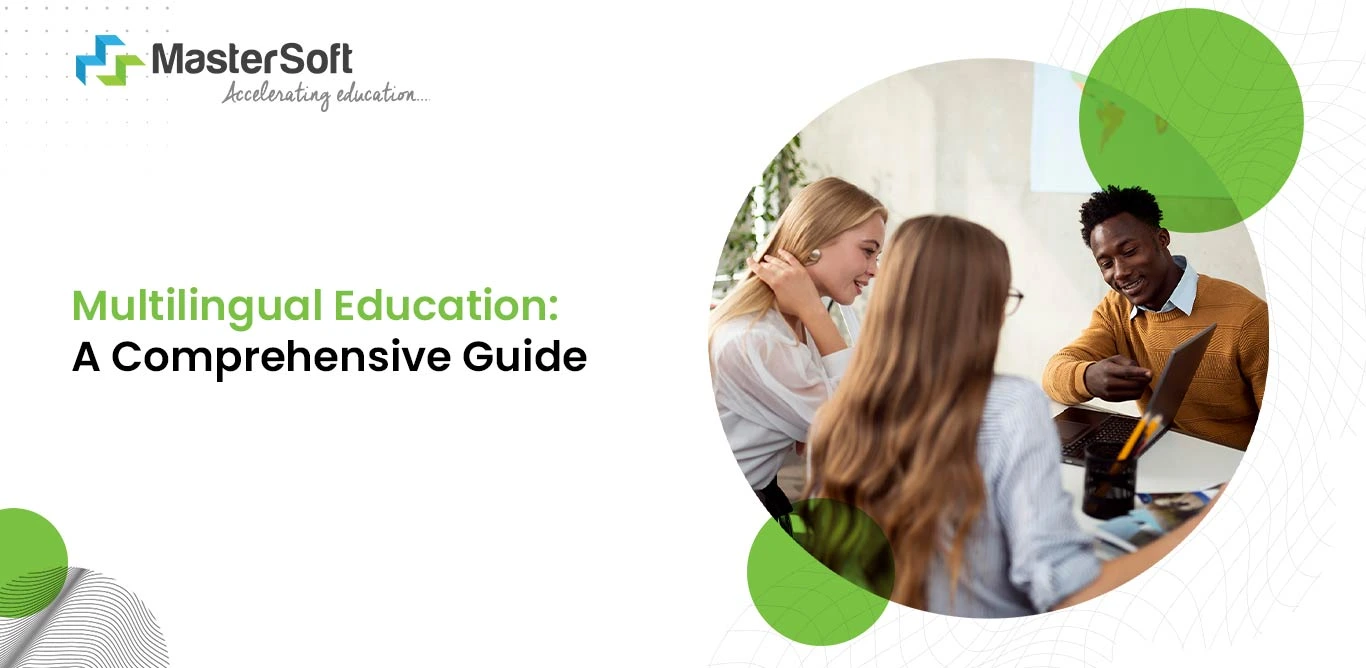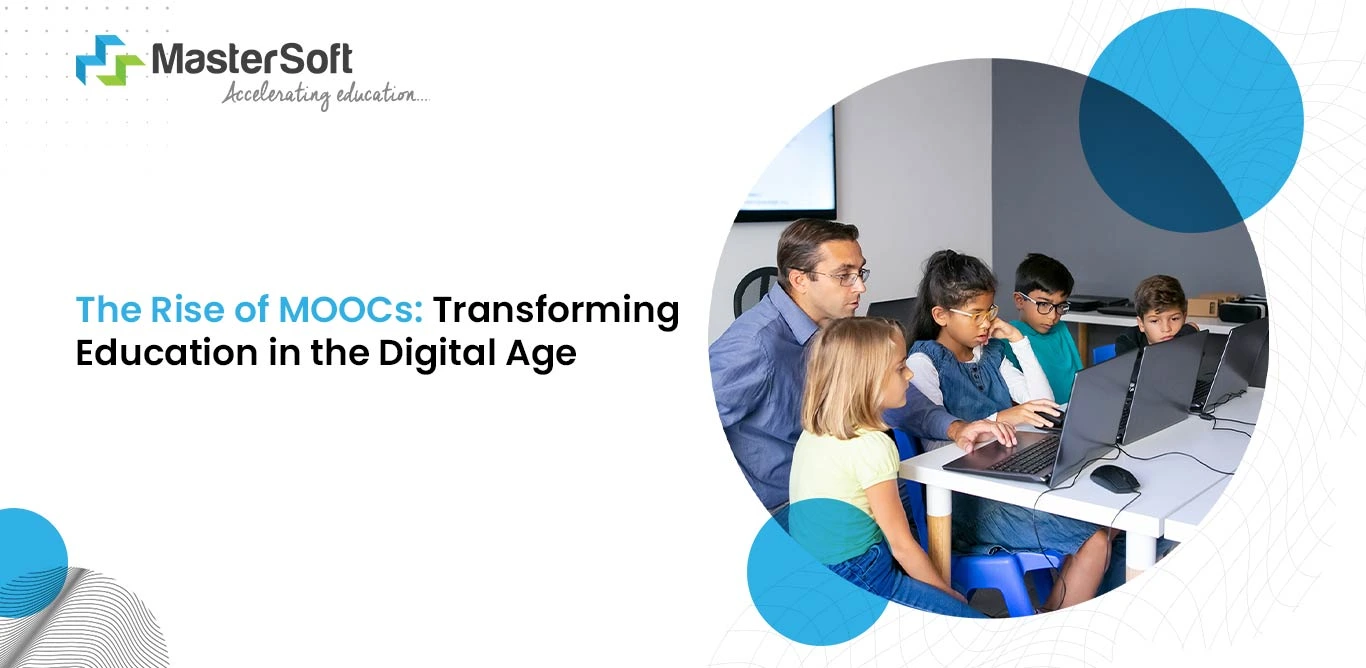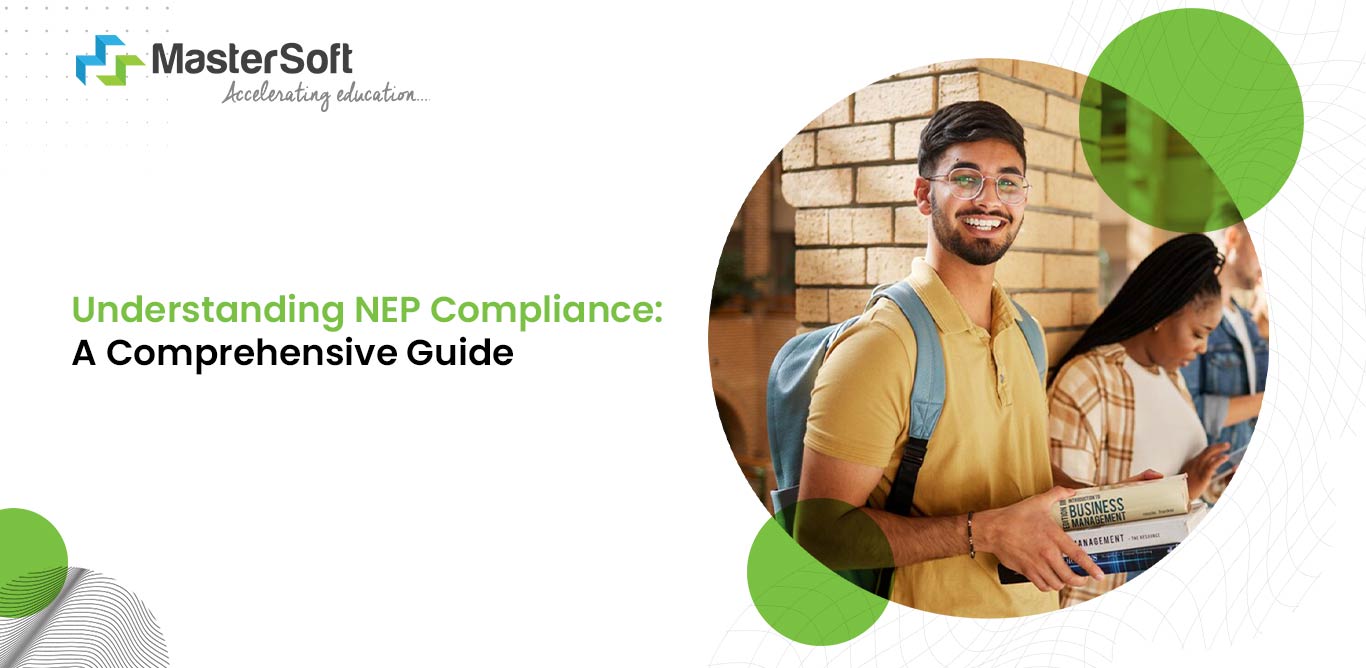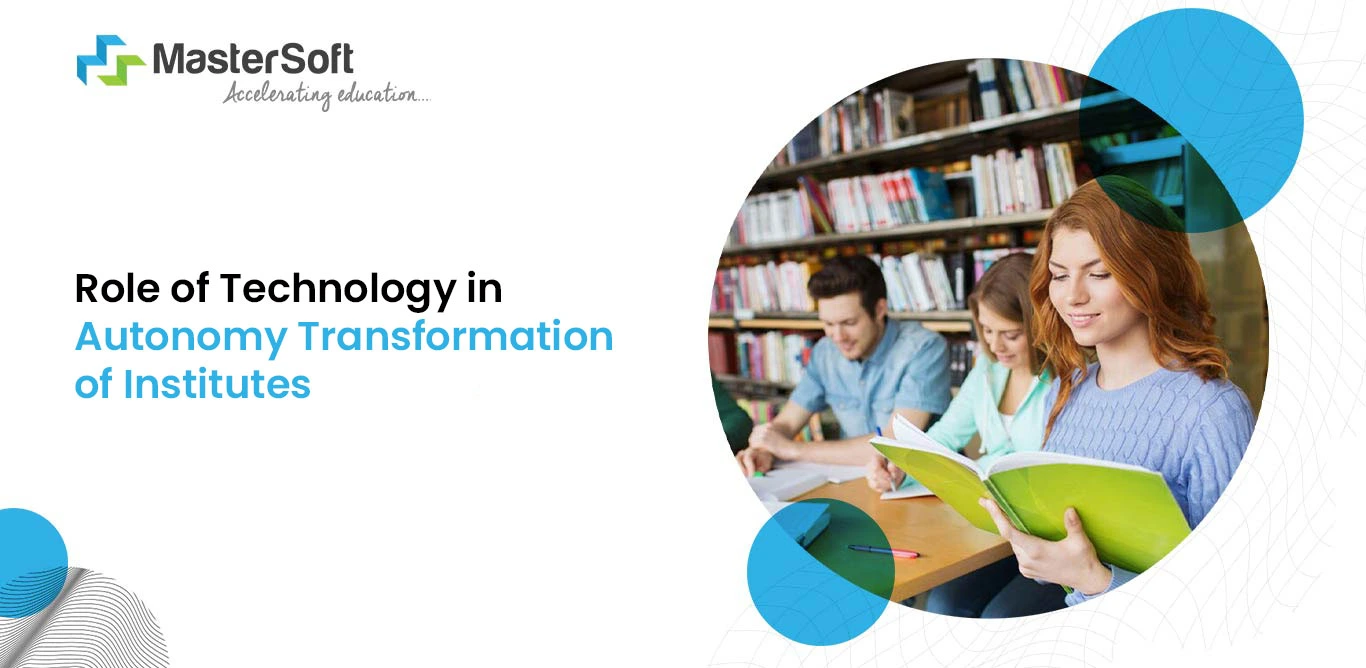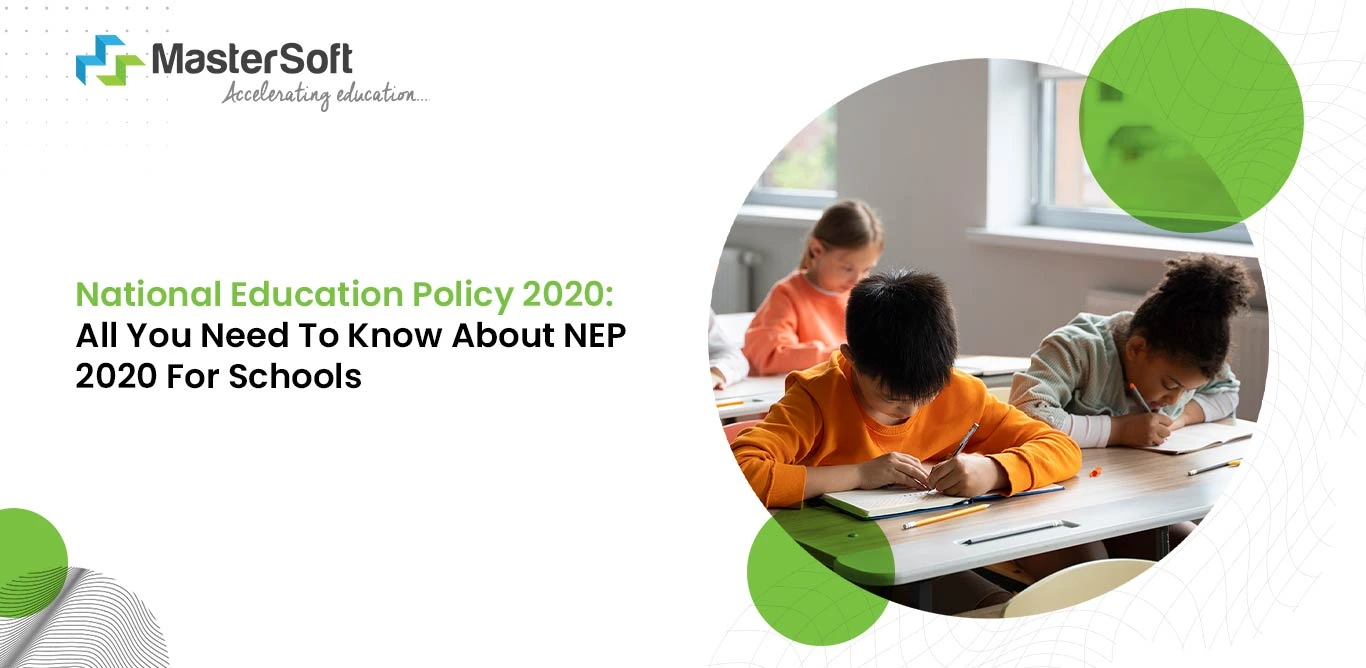02, Dec 2023
The world is a diverse playground, full of people from different backgrounds and locations with different beliefs and following different traditions, all connected to each other in one way or another. But one thing that often comes between these connections is the language barrier.
Diversity of language often causes confusion and difficulty in communication and socialising. But the one thing that the language barrier affects the most is the education sector. Learners often find it difficult to adapt to and understand what is being taught if the medium of education is in a single language that is alien to them.
To tackle this issue and make learning a better experience, Multilingual Education (MLE) was introduced. As the name suggests, Multilingual Education is basically using more than one language as a medium of instruction and learning in formal or informal settings.
Today, let us have a look at the concept, benefits, challenges, and examples of MLE. We’ll understand the impact of Multilingual Education and the implications of NEP 2020 for MLE in India and suggest some ways forward.
National Education Policy 2020: All You Need To Know About NEP 2020 For Schools
What is Multilingual Education?
As defined earlier, Multilingual Education (MLE) is the use of one or more than one language as a medium of instruction and learning in formal and non-formal settings. The aim of multilingual education is to promote linguistic diversity, intercultural dialogue, social inclusion, and quality education for all learners and opportunities for all learners
According to UNESCO, the use of at least three languages is the basis of MLE:
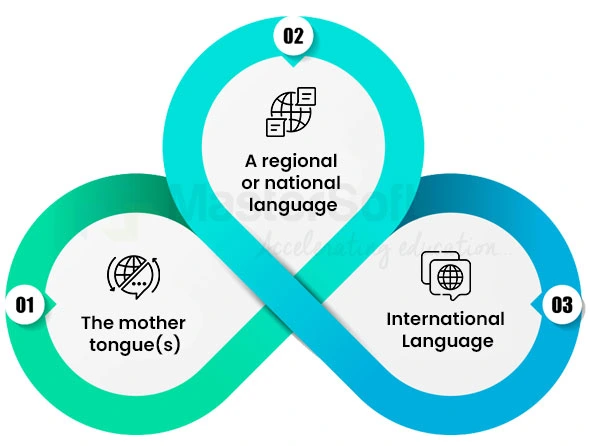
MLE has been receiving support from UNESCO since it published the Use of Vernacular Languages in Education in 1953. In 1999, UNESCO adopted a resolution defining MLE and emphasising its benefits for cognitive development, academic achievement, cultural identity, and social cohesion.
Depending on the context, goals, resources, and stakeholders involved, MLE can take various forms. Some of the common models of MLE are:
Transitional Bilingual Education:
Transitional Bilingual Education is a model that uses the mother tongue as the main language of instruction in the early years of a child's learning and gradually introduces a second language (usually a dominant or official one) as a subject, only to slowly start using the second language as the medium of instruction.
The goal of doing this is to help students transition from their mother tongue to a second language with a smoother flow.
Maintenance of Bilingual Education:
This model functions by using both the mother tongue as well as a second language as the language of instruction all throughout schooling. The main aim is to help students not only maintain and develop their mother tongue but also acquire proficiency in the second language.
Immersion Bilingual Education:
The Immersion Bilingual Education focuses more on the use of a second language as the main or even sole language of instruction for students who speak a different mother tongue. The motive behind this is to help the students acquire proficiency in the second language while maintaining their mother tongue.
Two-Way Bilingual Education:
As the name suggests, Two-Way Bilingual Education uses two languages (usually a dominant/official language and a minority or indigenous language) as languages of instruction for the students who speak either one of them as their mother tongue.
The ultimate aim of this model is to help students acquire a command of both languages while fostering cross-cultural understanding and cooperation
Multilingual Education:
Multilingual Education uses more than two languages as languages of instruction for students who speak different mother tongues. The aim of Multilingual education is to develop a good command of multiple languages in the students while respecting and promoting linguistic diversity.
ECCE - Early Childhood Care And Education - A Complete Guide
The Importance of Multilingual Education
So far, one thing is clear, Multilingual Education is of high importance and offers great benefits. MLE has both cognitive and socio-cultural benefits for learners, educators, communities, and societies.
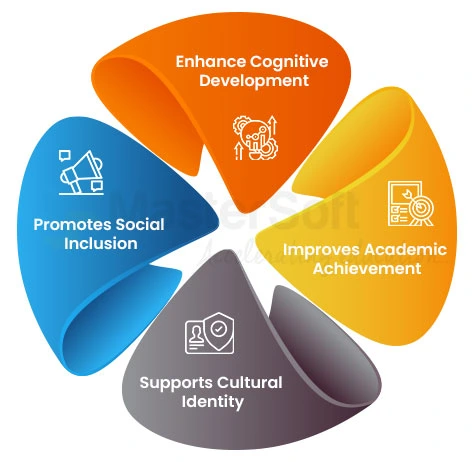
Here are some advantages of MLE:
1. Enhance Cognitive Development:
Research shows that learning in one’s mother tongue enhances cognitive skills such as memory, attention, reasoning, problem-solving, creativity, and metalinguistic awareness. Learning multiple languages also boosts cognitive flexibility, executive function, and brain plasticity.
2. Improves Academic Achievement:
Studies indicate that learning in one's mother tongue improves academic performance in various subjects such as mathematics, science, social studies, and literacy. Learning multiple languages also enhances communication skills, critical thinking skills, and intercultural competence.
3. Supports Cultural Identity:
Evidence suggests that learning in one's mother tongue strengthens cultural identity, self-esteem, motivation, and emotional well-being. Learning multiple languages also fosters respect for diversity, tolerance, and empathy.
4. Promotes Social Inclusion:
Data shows that learning in one's mother tongue reduces dropout rates, increases enrolment rates, and improves access to quality education for marginalised groups such as indigenous peoples, minorities, refugees, and migrants. Learning multiple languages also facilitates social integration, participation, and mobility.
Challenges of Multilingual Education
Just like every new development and initiative, Multilingual Education also faces multiple challenges and barriers, from political to sentimental and discriminatory. These challenges may hinder the growth rate and never stop it.
Let's have a look at some of these:
1. Lack of Political Will:
When it comes to supporting or implementing multilingual education, many governments and programmes tend to take a step back due to various reasons, such as national unity, security, prestige, or cost.
Opposition from dominant groups who perceive MLE as a threat to their linguistic or cultural hegemony is also a major barrier faced by Multilinguistic Education.
2. Inadequate Resources:
A great number of schools or local communities lack the resources necessary to provide quality MLE, such as textbooks, curriculum, materials, infrastructure, or technology. In order to ensure its sustainability and effectiveness, MLE requires additional funding and coordination.
3. Insufficient Teacher Training:
For proper implementation of MLE, the teachers need to be trained first. However, many teachers are not adequately prepared or equipped to teach in multiple languages or to deal with multilingual classrooms.
They may either lack the required linguistic competence, pedagogical skills, or cultural sensitivity to deliver Multilingual Education. Workload, burnout, and Isolation are also some challenges the teachers may face.
4. Negative Attitudes Towards Minority Languages:
A good number of students, parents, or other stakeholders have negative attitudes towards the minority languages, even MLE. They might view minority languages as not only inferior and irrelevant but also detrimental to learning or career prospects.
Also, they may have biassed beliefs and tend to lean towards global languages only, such as English or French, as a medium of instruction or a subject of study.
5. Dominant Monolingual Norms and Standards:
Many education systems are based on monolingual norms and standards that do not accommodate or value linguistic diversity and prefer to stay the same. Monolingual assessments, examinations, or certifications disadvantage multilingual learners or teachers.
Monolingual policies, practices, or ideologies may also undermine the status and role of minority languages in education and society.
Examples of Multilingual Education
A great number of MLE initiatives and programmes are established and are being implemented around the world that demonstrate its feasibility and benefits.
Some of them are:
1. The Mother Tongue-Based Multilingual Education (MTB-MLE), Philippines:
Launched in 2012 as a part of the K-12 Basic Education Reform, MTB-MLE aims to use the mother tongue as the primary medium of instruction from kindergarten to grade 3, while introducing Filipino and English as additional languages of instruction.
The programme covers 19 regional languages and serves more than 1.5 million learners in over 30,000 schools.
2. The Bilingual Intercultural Education (EIB), Peru:
The EIB was established in 1990 in response to the demands of the native people for quality education that respects their linguistic and cultural rights. EIB strives to use indigenous languages and Spanish as languages of instruction in primary and secondary education all the while promoting intercultural dialogue and citizenship.
The EIB programme covers 47 indigenous languages and serves more than 1 million learners in over 15000 schools.
3. The Content and Language Integrated Learning (CLIL), Europe:
Developed in the 1900s, CLIL was a way to enhance language learning and content learning across the curriculum. It aims to use a second or foreign language (usually English) as a medium of instruction for teaching non-language subjects such as mathematics, science, history, or the arts.
The Content and Language Integrated Learning is implemented in various forms and levels in many European countries, such as Finland, France, Germany, Italy, Spain, and Sweden.
Implementation of Multilingual Education in India
India is a country with rich linguistic diversity and complexity.
According to the 2011 census, India has 121 languages with more than 10,000 speakers each, and 22 official languages. However, only about 10% of Indians speak English as their first or second language. The majority of Indians speak one or more regional languages such as Hindi, Bengali, Telugu, Marathi, Tamil, Urdu, Gujarati, Kannada, Malayalam, Odia, Punjabi, or Assamese.
India has a long history of multilingual education policies and practices. The Constitution of India recognizes the right to education in the mother tongue(s) as a fundamental right. This along with many other agendas brought NEP 2020 into existence.
The National Education Policy (NEP) of 2020 emphasises the importance of MLE for achieving universal access and quality education.
The NEP proposes that children should learn in their mother tongue(s) or local language(s) at least until Grade 5 (preferably until Grade 8) and that they should learn at least three languages by Grade 6.
National Education Policy 2020 - Make Your Institute Ready For NEP-2020
The NEP also envisages the development of Indian Sign Language (ISL) as a language of instruction for deaf learners; the promotion of classical languages such as Sanskrit; the revitalization of endangered languages such as Bodo or Kokborok; and the integration of foreign languages such as French or German into the school curriculum.
The implementation of MLE in India faces many challenges and opportunities. Some of the challenges include:
- Lack Of Adequate Resources And Infrastructure
- Shortage Of Qualified Teachers
- Low Enrolment And Retention Rates
- High Dropout Rates
- Low Learning Outcomes
- Social Stigma And Discrimination
- Linguistic Hegemony And Conflict
- Resistance From Parents And Stakeholders.
Some of the opportunities include: increasing demand for multilingual skills in the global market; growing awareness of the benefits of MLE among policymakers and practitioners; availability of innovative technologies and platforms; emergence of civil society organisations and networks; and successful examples of MLE programmes in various states.
Summing It Up,
In conclusion, Multilingual Education (MLE) is an effective strategy to promote linguistic diversity, intercultural dialogue, social inclusion, and quality education for all learners. It has both cognitive and socio-cultural benefits for learners, educators, communities, and societies. The concept of MLE is gaining popularity worldwide, and more and more countries are adopting it as a means to promote multilingualism and multiculturalism.
In India, the implementation of MLE can be challenging due to the linguistic diversity of the country. However, it is essential to recognise the importance of using multiple languages in education and to promote it at all levels of the education system. It is also crucial to provide adequate resources, support, and training to teachers and educators to ensure the successful implementation of MLE.
As we move forward, it is important to continue exploring and experimenting with different models of MLE to cater to the diverse needs of learners and to promote linguistic diversity and cultural understanding. With the right approach, MLE can help build a more inclusive and equitable education system that benefits learners and society as a whole.
Connect With MasterSoft - Your One-Stop ICT Solutions Aligned With NEP 2020
Mobile: 08448010216
Email:info@mastersofterp.com

